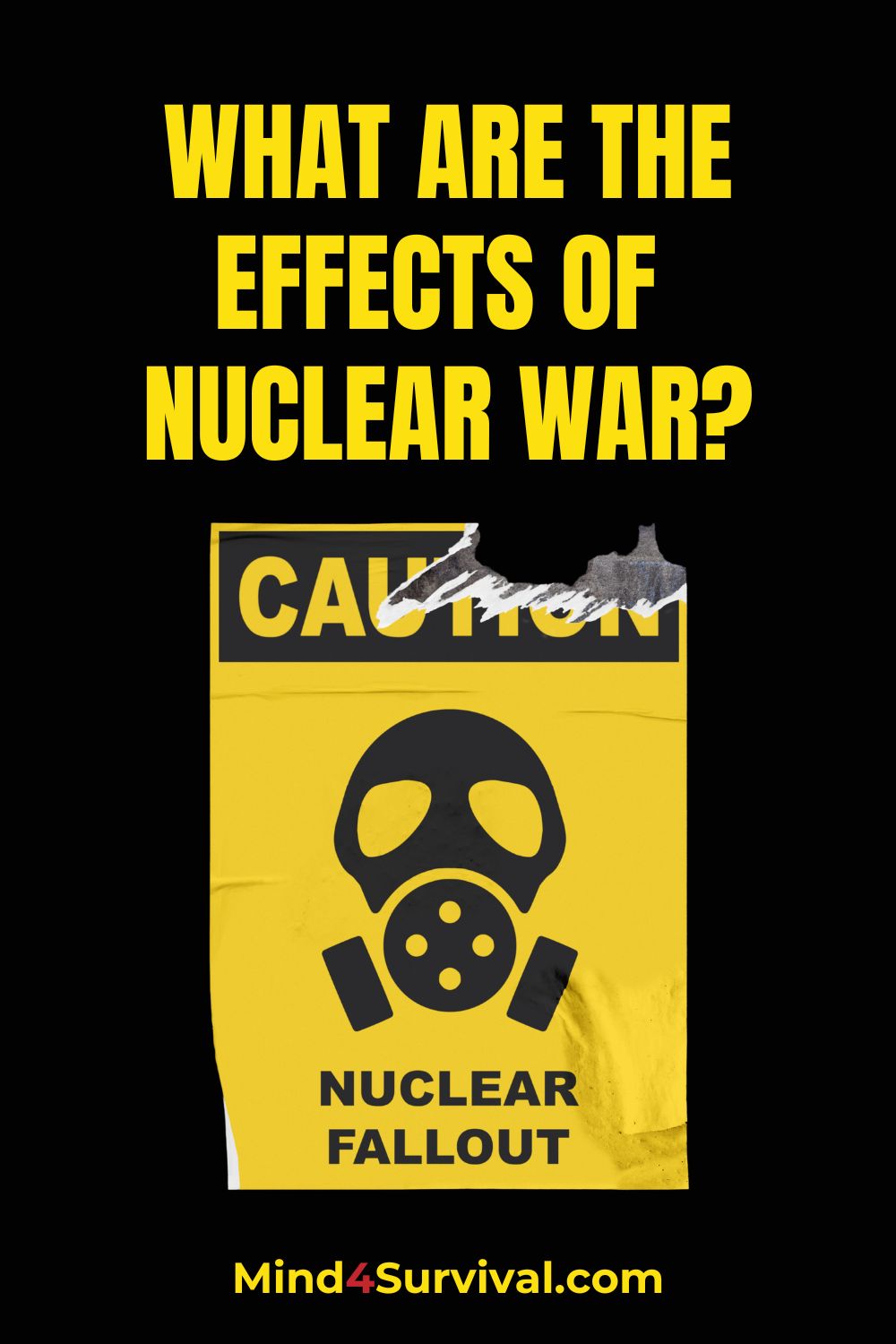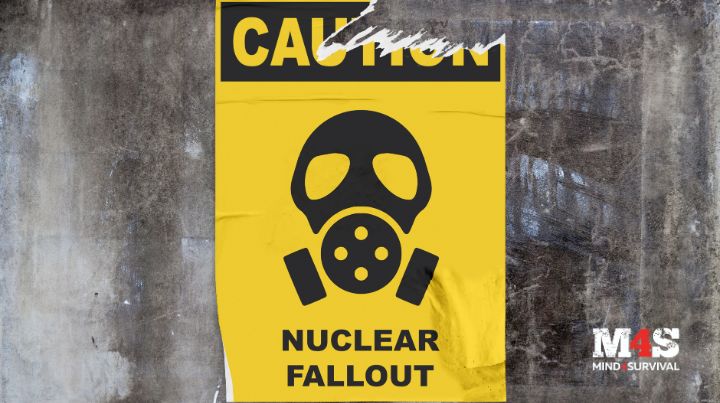In today’s world, the threat of nuclear war looms larger than ever. With tensions between nations running high and the risk of a miscalculation, accident, or act of terrorism ever-present, it’s more important now than ever to be prepared for the aftermath of a global nuclear war. After all, as the prepping community knows, being prepared for a nuclear incident can mean the difference between life and death.
The Short-Term Effects of a Nuclear War
A nuclear attack would have immediate and devastating consequences on life and infrastructure. Besides the obvious impact on society and the global climate, the primary short-term effects of a nuclear attack are blast effects, thermal effects, and radiation effects.
Blast Effects
The blast effects of a nuclear exchange are the result of the shock wave generated by the explosion. Although the strength of the blast lessens as you move further away from its epicenter, it is still capable of causing significant harm and injury even when several miles away from the explosion.
Thermal Effects
The thermal effects of nuclear explosions are what make up the intense heat and light generated by the explosion.
As the nuclear bombs of World War II showed us, the heat from a nuclear bomb can cause temperatures of 1,800,000°F (1,000,000°C) at the center of the blast, which is over four times that of the sun. (Source). With such insanely high temperatures, it’s easy to understand that the blast of a nuclear explosion can cause severe burns and set fire to anything not immediately vaporized by the heat.
Additionally, according to the CDC, “Those who look directly at the blast could experience eye damage ranging from temporary blindness to severe burns on the retina.” (Source) Therefore, it’s crucial to ensure that you avert or shield your eyes from the explosion.
Radiation Effects
The radiation effects of nuclear weapons can cause long-term harm to human health and the environment. Radiation exposure can lead to radiation sickness, cancer, and genetic mutations.
The level of radiation exposure depends on the distance from the nuclear blast, the size of the bomb, and the type of nuclear weapon used. However, the Atomic Archive writes:
“It has been estimated that a weapon with a fission yield of 1 million tons TNT equivalent power (1 megaton) exploded at ground level in a 15 miles-per-hour wind would produce fallout in an ellipse extending hundreds of miles downwind from the burst point. At a distance of 20-25 miles downwind, a lethal radiation dose (600 rads) would be accumulated by a person who did not find shelter within 25 minutes after the time the fallout began. At a distance of 40-45 miles, a person would have at most 3 hours after the fallout began to find shelter.” (Source)
With figures such as that, it’s easy to see that making plans and preparations ahead of time is extremely important. It’s fair to assume that those who live within 50 miles of a potential nuclear target should prepare ahead of time to shield themselves in place or be ready to bug out of the area as fast as possible.
It goes without saying, but time is not on your side when nuclear missiles are launched.
The Long-Term Effects of a Nuclear War
The long-term effects of a nuclear war would be numerous and far-reaching. The consequences impact not only humans but also the environment and the global ecosystem.
Radiation Effects on Humans
Over the long term, the radiation from a nuclear conflict can cause various health problems, including an increased risk of cancer, birth defects, and other illnesses. The effects of radiation exposure may not be immediately visible but can manifest in the years and decades following exposure. As such, it can affect individuals, families, and communities for generations.
Radiation Effects on the Environment
The radiation will also severely impact the environment. The soil, water, and air will all be contaminated, making it difficult for plants and animals to survive.
In addition, the radiation can also affect the genetic makeup of plants and animals, causing mutations and deformities that can have long-term consequences. The genetic mutations and deformities caused by radiation could lead to reduced crop yields and the loss of certain plant and animal species, making it more difficult to feed the world’s population.
Nuclear Winter
The fires caused during a nuclear war scenario would release massive amounts of smoke and soot into the atmosphere, which could block out the sun’s rays and lead to a “nuclear winter.” This could result in a global cooling effect, causing crop failures and famine on a massive scale.
Additionally, the contamination of soil and water with radiation would make it difficult, if not impossible, to grow crops or raise livestock. As a result, the loss of food production could lead to widespread famine and starvation, especially in areas already struggling with food production.
Radiation Dissipation After a Nuclear War
Radiation is one of the most devastating effects of a nuclear detonation, with long-lasting consequences for human health and the environment. Understanding how radiation dissipates is crucial to estimating the time it would take for Earth to recover after a nuclear war.
Radiation Decay and Half-Life
Radiation decay is the process by which radioactive materials lose their energy and become stable. This decay process is measured by half-life, which is the time it takes for half of the radioactive atoms in a substance to decay. For example, the half-life of Radioactive Iodine-131 (I-131), a common and dangerous radioactive isotope released in a nuclear explosion, is around eight days.
The time it takes for radiation to dissipate depends on the type of radiation. Gamma rays, for instance, can travel long distances and take days or even years to dissipate. On the other hand, a piece of paper can stop alpha particles.
Weather and Geography
Other various factors, including geography and weather conditions, can also influence the dissipation of radiation.
For instance, weather conditions like rain can wash away radioactive particles from the atmosphere and help limit contamination. On the other hand, wind can carry radioactive materials over even larger areas, making the impact of the blast even more widespread.
Additionally, radiation can be absorbed by soil and vegetation, further adding to the complexities of its dissipation and making the surrounding environment dangerous for years after the initial blast and radiation exposure.
The Bottom Line on the Effects of a Nuclear Attack
It’s common knowledge that the effects of nuclear war would be devastating both in the short and long term.
The immediate impacts of nuclear blasts, including the blast, heat, and radiation, could cause widespread destruction, injury, and death. Similarly, the long-term effects of radiation exposure would further amplify the devastation and cause long-term consequences for our health and overall survival.
Therefore, it’s essential to prepare for the worst-case nuclear war scenarios by having a plan and stockpiling the supplies you need to ensure the survival of you and your loved ones in the aftermath of a nuclear attack.
What are your thoughts on this article? Have you started prepping for a potential nuclear attack? Tell us in the comments below.
Stay safe,

Read the full article here
